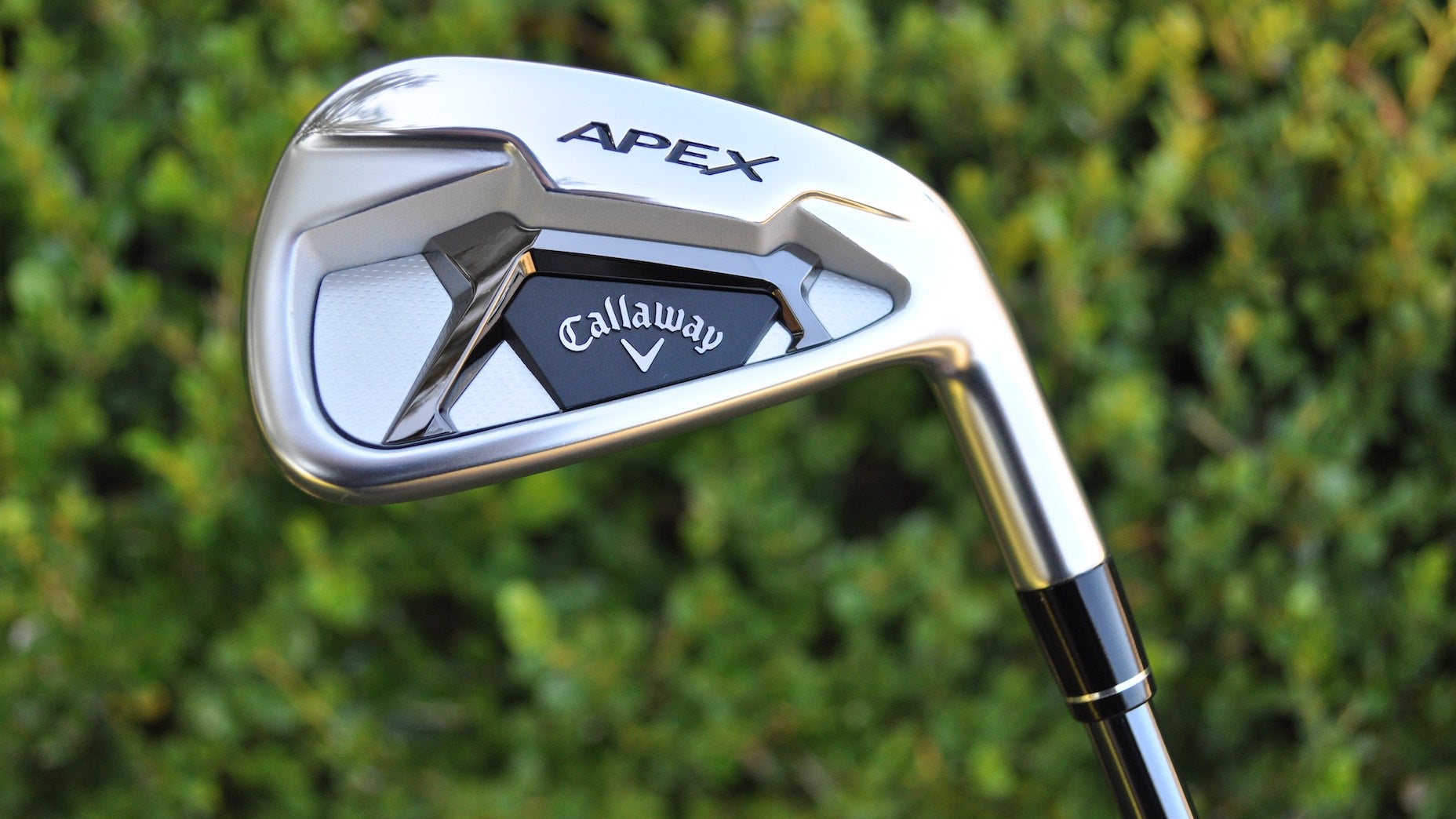Callaway’s “hotshot club designer” is at it again. What first began as a project to reimagine the driver face architecture with the help of Artifical Intelligence (AI) turned into a technological innovation that can now be found on the equipment manufacturer’s fairway woods and game-improvement irons.
Now you can add Callaway’s popular Apex iron line to the list.
Geared for the low to mid-handicapper — although the handicap range is expanding this year — the new Apex 21 features an AI-designed Flash Face Cup for the first time since the forged iron was introduced in 2013.
The story with AI has been about optimizing ball speeds across the entire face since Flash Face burst onto the scene, but there’s more to the face on the Apex 21 than pure distance. Allowing the supercomputer to work its magic resulted in a Flash Face Cup structure that optimizes launch, spin and forgiveness for each iron in the set. (Only the 4- through 9-iron feature the Flash Face Cup; the pitching wedge and gap wedge have a face plate.)
“What the AI is doing is getting spin rate consistency across the entire face,” said Dave Neville, Callaway’s Senior Director of Brand and Product Management. “That’s something we haven’t been able to achieve in the past with just a standard type of VFT. People talk about using AI, but you just don’t see it when you’re looking at a non-intuitive face. The different ripples and bumps on this face are far and away ahead of where anyone else is with using AI for a club.”
Housed just behind the cup face, in the lower half of the head, slugs of tungsten positioned in the center, middle and toe serve a dual purpose, mitigating distance loss and increasing launch, especially on off-center strikes that tend to miss low on the face. An average of 48.5 grams of tungsten can be found in the 4- through 9-iron.
Proprietary urethane microspheres were also added between the face and tungsten to deliver a solid sound and feel at impact. A more subtle change is a refined sole design to enhance turf interaction. Golfers will also notice Callaway kept the lofts static across the board when compared to the 19 version.
“We’re always accused of ‘loft jacking’ to get more ball speed,” Neville said. “This is the exact same lofts but a lot more ball speed, larger sweet spot. That’s coming from the face cup and AI as well. We know this category has become really competitive. We sort of had it to ourselves for a while.”
Apex 21 will be joined by a completely revamped Apex Pro 21 that no longer sports a svelt cavity-back profile. Callaway’s designers chose to go with a forged 1025 hollow cavity muscleback design to up the speed and forgiveness, while still allowing better players to reap the benefits of a compact profile that delivers flight control and workability. The better-player iron fits squarely between Apex and X Forged CB in the current iron lineup.
“The goal was to target low single digit handicappers but pack a ton of tech into the head,” Neville said. “It launches higher than the previous Apex Pro. It’s longer. We’ve seen incredible results. It’s still an Apex Pro, but I’d expect the market share to be higher than our previous version. You don’t have to be a plus handicap to put these in the bag. It’s a lot more playable.”
The playability comes from an eye-popping 70 grams of tungsten, on average, in the 3- through 7-iron heads. Taking a page from the Apex 21 standard playbook, the metal is designed to increase launch and forgiveness. An AI-designed face cup can be found through the 7-iron, while the scoring clubs (8-GW) include a more traditional face plate for consistency purposes.
Completing the iron lineup is a new addition for 2021: Apex DCB 21. The model is Callaway’s answer for the 14 to 16 handicap golfer who didn’t quite fit the standard Apex. With a wider sole, additional offset and deeper cavity, the iron delivers another level of forgiveness and consistency. Along with shoring up turf interaction, the wider sole pushes weight deeper in the head to promote a higher launch.
An AI-designed face cup and up to 50 grams of tungsten per iron round out the Apex DCB design.
“Golfers in this handicap range still want it to look like a player’s iron,” Neville said. “It can be played as a full set or as a combo between Apex and Apex DCB. The lofts are almost identical throughout the sets.”
Callaway’s Apex irons will be available Feb. 11 for $1,480 (8-piece steel) and $1,600 (8-piece graphite).
Want to overhaul your own bag for 2021? Visit the expert fitters at our sister company, True Spec Golf. For more on the latest gear news and information, tune into our recent Fully Equipped podcast by clicking on the Spotify embed below!
